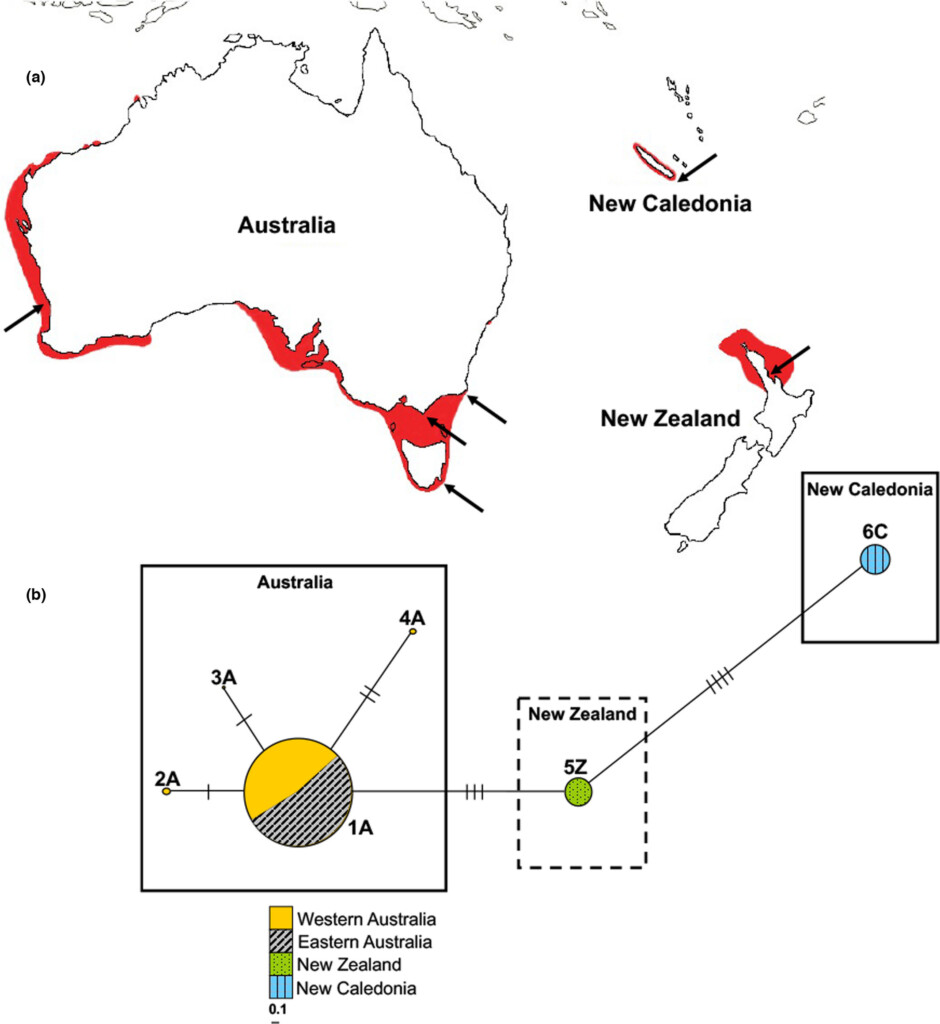
LINKED PAPER
Structured phylogeography and restricted gene flow among populations of Fairy Tern (Sternula nereis) across Australasia: implications for the endangered New Zealand population). Baling, M., & Brunton, D. H. 2022. IBIS. DOI: 10.1111/ibi.13048. VIEW
The Fairy Tern (Sternula nereis) is one of the rarest species in New Zealand, with a population size of just 29 birds and 11 active breeding pairs (Ferreira et al. 2005). Despite its precarious status, conservation efforts for this small seabird have been limited, as it was previously considered to be a peripheral part of the larger Australian population. However, recent genetic research challenges this perspective, suggesting that the New Zealand population of Fairy Terns is a distinct evolutionary unit that requires its own conservation strategy.
Haplotypes
In their study, Marleen Baling and Dianne Brunton examined the genetic composition of Fairy Terns across breeding populations in Australia, New Zealand, and New Caledonia (Baling et al. 2009, Carter & Mustoe 2007). They analyzed the mitochondrial gene ND2 and found unique genetic variants (or haplotypes) in New Zealand and in New Caledonia. The Australian population, however, contained four haplotypes that were not present in the other breeding populations. These genetic patterns imply that the New Zealand population of Fairy Terns is not a peripheral outpost of the Australian population but rather a distinct genetic unit with its own evolutionary history.

Figure 1. Genetic analyses revealed unique haplotypes for the populations on New Zealand (green) and New Caledonia (blue).
Evolutionary Unit
The presence of only one genetic variant in the New Zealand population suggests that it may have been recently established by a few individuals or has experienced a significant population decline in the recent past. Further genetic data is needed to determine which of these scenarios is more likely. Nevertheless, the distinct genetic makeup of the New Zealand Fairy Tern highlights the importance of managing it as a separate evolutionary unit (Moritz 1994). With proper conservation efforts, we can hope for a fairy tale ending for this unique population.
References
Baling, M., Jeffries, D., Barré, N. & Brunton, D.H. (2009). A survey of Fairy Tern (Sterna nereis) breeding colonies in the Southern Lagoon, New Caledonia. Emu 109: 57– 61. VIEW
Carter, M. & Mustoe, S. (2007). Another form of Fairy Tern Sterna nereis breeding in Australian Territory. Australian Field Ornithology 24: 167– 179. VIEW
Ferreira, S.M., Hansen, K.M., Parrish, G.R., Pierce, R.J., Pulham, G.A. & Taylor, S. (2005). Conservation of the endangered New Zealand Fairy Tern. Biological Conservation 125: 345– 354. VIEW
Moritz, C. (1994). Applications of mitochondrial DNA analysis in conservation: a critical review. Molecular Ecology 3: 401– 411. VIEW
Image credits
Top right: Fairy Tern (Sternula nereis) | JJ Harrison | CC BY-SA 3.0 Wikimedia Commons
Blog posts express the views of the individual author(s) and not those of the BOU.
If you want to write about your research in #theBOUblog, then please see here





